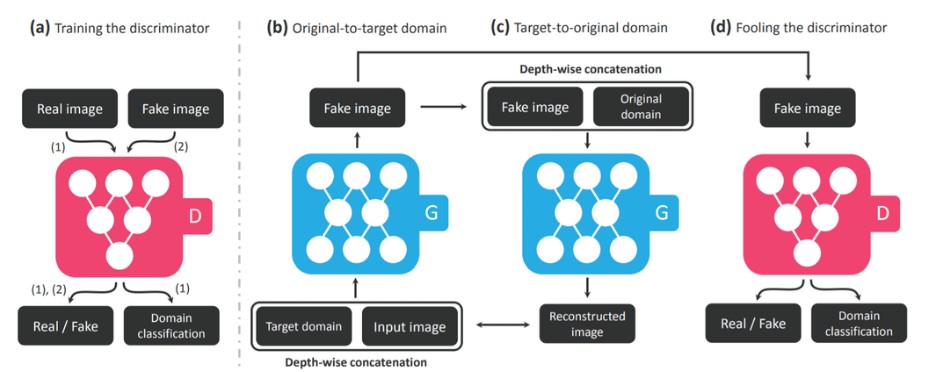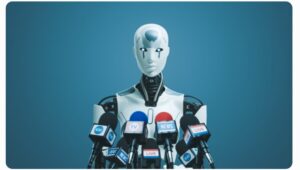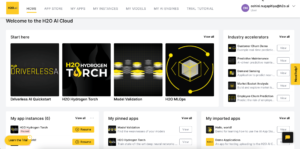Deepfake AI
Deepfake AI: the meaning, trends, ethical concerns, and list of tools to generate one.
What is Deepfake AI?

Deepfake AI is a cutting-edge technology that uses artificial intelligence (AI) and machine learning (ML) to create highly realistic synthetic media, including videos, audio recordings, and images. The term “deepfake” comes from combining “deep learning”—a subset of machine learning that mimics the neural networks of the human brain—with “fake,” highlighting the creation of content that isn’t genuine.

Current Trends in Deepfake AI
Entertainment and Media: Deepfake technology is revolutionising the entertainment industry by enabling filmmakers and content creators to produce visual effects that were previously challenging, time-consuming, or expensive to achieve. For instance, in Rogue One: A Star Wars Story, the filmmakers digitally recreated Carrie Fisher’s likeness to allow her character to appear in scenes despite her passing. This trend extends to television series, commercials, and short films, where producers can use deepfake technology to age or de-age actors or create entirely new performances. In addition, social media influencers use deepfakes for creative storytelling, enhancing their content’s appeal.
Education and Training: In educational contexts, deepfake technology is being utilised to develop innovative and interactive learning tools. AI-generated avatars can simulate historical figures, scientists, or educators in instructional videos, making the learning experience more engaging. For example, students can interact with a digital representation of Albert Einstein discussing the theory of relativity or learn about world history through conversations with lifelike avatars of historical leaders. This immersive approach can enhance student engagement and retention of information, promoting a deeper understanding of complex subjects.
Marketing and Advertising: Brands are increasingly employing deepfake technology to create personalised marketing campaigns. By generating advertisements that feature a consumer’s face superimposed onto a model, companies can craft tailored content that resonates with individual customers. This level of personalisation can significantly enhance engagement and conversion rates, as consumers are more likely to respond to content that feels relevant to them. For example, a skincare brand might create a campaign where users can see themselves using a new product in a lifestyle ad, leading to a more profound connection with the brand.
Social Media: The rise of deepfake applications has led to a surge in user-generated content on social media platforms. People create entertaining deepfake videos for fun, which can quickly go viral. Platforms like TikTok and Instagram have seen users producing comedic deepfakes, where they swap faces with celebrities or famous characters. This trend has resulted in various challenges and memes, showcasing the playful potential of deepfakes while simultaneously raising concerns about the accuracy of shared media. However, the ease of creating such content has prompted discussions about the authenticity of visual storytelling and the implications for personal identity.
Political Manipulation: The potential for deepfake technology to manipulate public opinion and influence political landscapes is one of its most concerning aspects. The ability to create convincing videos of politicians making controversial statements or engaging in inappropriate behaviour can sway public perception and disrupt electoral processes. For example, during the 2020 U.S. presidential election, experts warned that deepfakes could be weaponised to spread misinformation, potentially undermining democracy and trust in political institutions. Additionally, countries like Russia have reportedly used deepfake technology to create disinformation campaigns targeting other nations, raising national security concerns.
Ethical Concerns
The development and proliferation of deepfake technology raise several ethical concerns that warrant careful consideration:
Misinformation: Deepfakes can be weaponised to spread misinformation and disinformation, leading to public distrust and confusion. Misleading videos of political figures could manipulate voter opinions or incite unrest, creating a crisis of credibility in media. This manipulation can also extend to public health issues, where fake videos might misrepresent facts about diseases, vaccines, or safety measures.
Privacy Violations: The creation of deepfake content without a person’s consent poses severe privacy issues. Individuals, especially celebrities, may find their likeness used in inappropriate contexts, leading to harassment, defamation, or emotional distress. For instance, deepfake pornography, which uses someone’s likeness without their consent, has emerged as a troubling trend that raises significant ethical questions regarding personal rights and exploitation.
Identity Theft: Deepfake technology can facilitate identity theft, where malicious actors impersonate individuals in video calls or social media. This impersonation can lead to scams and other fraudulent activities, posing significant risks to individuals and organisations. For example, deepfake audio has been used to mimic a CEO’s voice in order to defraud companies by instructing employees to transfer large sums of money.
Cultural Impact: The widespread use of deepfakes may desensitise individuals to real-world events, making it challenging for people to discern what is authentic. This erosion of trust in media could lead to a societal shift where people become sceptical of all visual content, further complicating the fight against misinformation.
Regulatory Challenges: Governments are struggling to create effective regulations to address the challenges posed by deepfake technology. The lack of clear legal frameworks makes it difficult to hold individuals accountable for the misuse of deepfakes, complicating efforts to protect privacy and prevent harm. Legal scholars are calling for new laws to address the challenges posed by deepfakes, advocating for frameworks that balance the need for innovation with ethical considerations.
Tools for Generating Deepfakes
Despite the controversies surrounding deepfake technology, numerous tools are available for generating deepfake content. Here are some popular options:
DeepFaceLab: DeepFaceLab is an open-source tool that allows users to create deepfake videos by swapping faces in existing footage. It’s favoured by hobbyists and researchers due to its comprehensive tutorials and support for advanced features. Users can fine-tune the quality of the generated content, making it suitable for both personal and professional projects. Use Cases: Creating educational content, spoof videos, or enhancing video game character models.
FaceSwap: Another open-source application, FaceSwap, enables users to swap faces in images and videos with relative ease. It boasts a user-friendly interface and an active community, providing tutorials and support for newcomers. The tool can be used for various projects, from creating entertaining content to exploring the implications of deepfake technology. Use Cases: Transforming movie scenes, generating memes, or studying AI and ML principles.
Zao: Zao is a Chinese app that gained rapid popularity for its ability to generate deepfake videos almost instantly. Users can upload their photos and insert their faces into famous movie scenes. While it has garnered acclaim for its user-friendly interface, concerns about data privacy and consent have arisen, prompting discussions about the ethics of such applications. Use Cases: Personal entertainment, user-generated content for social media, and marketing campaigns.
Reface: Reface is an AI-powered mobile app that allows users to swap their faces with celebrities in GIFs and short video clips. The app is designed for entertainment and has amassed a large following on social media due to its ease of use and ability to generate entertaining content quickly. Use Cases: Social media sharing, creating humorous content, and engaging followers with personalised videos.
Avatarify: Avatarify is a tool that enables users to create real-time deepfake avatars for video calls. By using the technology, users can overlay their faces with various avatars or characters during virtual meetings, providing a fun and engaging way to communicate with others. Use Cases: Enhancing remote communication, personalising virtual events, and creating engaging educational content.
DeepArt: Although primarily focused on transforming images into artistic styles, DeepArt incorporates deepfake technology to create unique visual representations. Users can apply various artistic filters to their photos, creating visually striking images that blend their likeness with famous artistic styles. Use Cases: Creative expression, digital art projects, and marketing materials.
DeepFake Web: This online platform allows users to create deepfake videos without requiring advanced technical skills. Users can upload their videos and images to generate deepfakes quickly. Its accessibility has made it a popular choice for those looking to experiment with deepfake technology. Use Cases: Educational demonstrations, personal projects, and social media content creation.
FakeApp: FakeApp was one of the first popular tools for creating deepfake content. Although it has since lost some popularity due to competition, it remains a widely used application for generating realistic face swaps in videos. Use Cases: Movie editing, visual storytelling, and experimental art projects.
Synthetics: Synthetics is a newer player in the deepfake market, focusing on providing high-quality synthetic media for businesses. This tool aims to create lifelike avatars for marketing and customer engagement purposes. Use Cases: Business presentations, product demonstrations, and virtual customer interactions.
Wav2Lip: Wav2Lip is an AI-based tool that synchronises lip movements in videos with audio recordings. Users can manipulate video footage to match spoken dialogue accurately, creating the illusion that the person is saying the words in the audio clip. Use Cases: Film production, dubbing videos, and educational content.
Conclusion
Deepfake AI is a rapidly evolving technology with immense potential across various fields, including entertainment, education, marketing, and social media. However, it also raises significant ethical concerns, including misinformation, privacy violations, identity theft, and regulatory challenges. As the technology becomes increasingly accessible, the need for clear regulations and ethical guidelines will be paramount to mitigate its potential misuse. Understanding the implications of deepfake technology is crucial for consumers, creators, and policymakers alike to harness its benefits while safeguarding against its risks.
.




















